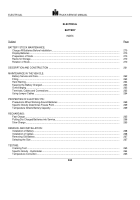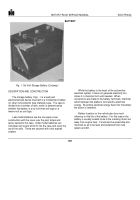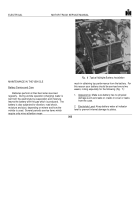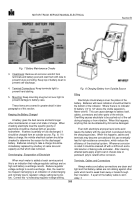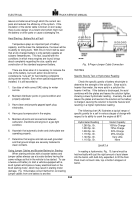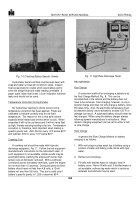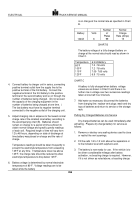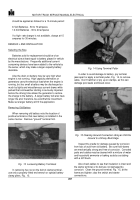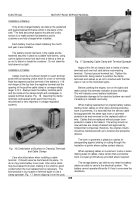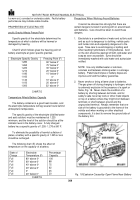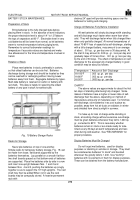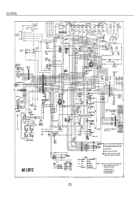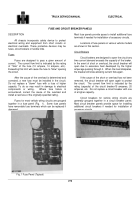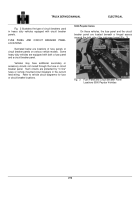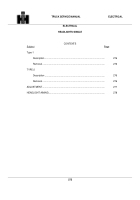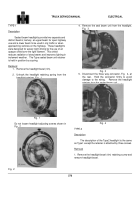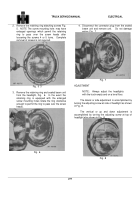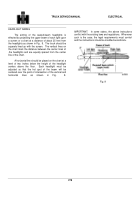TM-5-3805-254-14-P-2 - Page 273 of 894
MOTOR TRUCK SERVICE MANUALELECTRICAL
f a worn-out, corroded or undersize cable.
Faulty battery
performance may indicate cable trouble.
PROPERTIES OF ELECTROLYTE
pecific Gravity Affects Freeze Point
Specific gravity of the electrolyte determines the
temperature at which a battery will be harmed or
damaged by freezing.
Chart D which follows gives the freezing point of
battery electrolyte at given specific gravities.
Electrolyte Specific Gravity
Freezing Point (F)
1.280
90
°
below 0°
1.265
75° below 0°
1.220
30° below 0°
1.210
20° below 0°
1.180
10° below 0°
1.160
0
°
1.140
10° above 0°
1.100
20
above 0°
1.000
32° above 0°
CHART D
Temperature Affects Battery Capacity
The battery container is a good heat insulator, and
the electrolyte temperature will lag several hours behind
atmospheric temperature.
The specific gravity of the electrolyte (distilled water
and acid solution) must be maintained at 1.225
minimum, and the level of the solution should be at the
indicator level in the battery cover.
A fully charged
battery has a specific gravity of 1.255- 1.270 at 80
°
F.
To eliminate the possibility of harmful sulfation of
plates, a battery with a specific gravity of 1.225 or less
should be recharged.
The following chart (E) shows the effect of
temperature on the capacity of a battery.
State of
Electrolyte
Percentage
Charge
Temperature (F)
Capacity
Full
80° above 0°
100
Full
60
°
above 0°
88
Full
40° above 0°
75
Full
20
°
above 0°
62
Full
0°
45
Full
20
°
below 0°
20
CHART E
Precautions When Working Around Batteries
It cannot be stressed too strongly that there are
certain dangers involved in working with or around lead-
acid batteries.
Care should be taken to avoid these
dangers.
1.
Electrolyte is a combination of water and sulfuric acid
and as such is dangerous to clothing, vehicle parts
and human skin-and especially dangerous to the
eyes.
Take care to avoid slopping or spilling acid
when reading hydrometers or filling batteries.
Acid
on the skin should be washed off with cold water and
soap as soon as possible.
Eyes should be
immediately washed with cold water and a physician
notified.
NOTE:
Use only distilled water or odorless,
colorless and tasteless drinking water in a storage
battery.
Patent electrolytes or battery dopes are
injurious and void the battery guarantee.
2.
Never smoke or bring a flame close to batteries.
The gas given off during charging is hydrogen, which
is extremely explosive in the presence of a spark or
flame, Fig. 18.
Never check the condition of a
battery by shorting between terminals, and for
safety's sake never lay tools or other metal objects
on top of a battery where they might short between
terminals or short between ground and the
ungrounded terminal.
Always remember that one
side of the battery is grounded to the frame of the
vehicle and when working on other electrical
components, it is best to remove the ground side of
the battery first.
Fig.
18 Explosion Caused by Open Flame Near Battery
269
Back to Top


